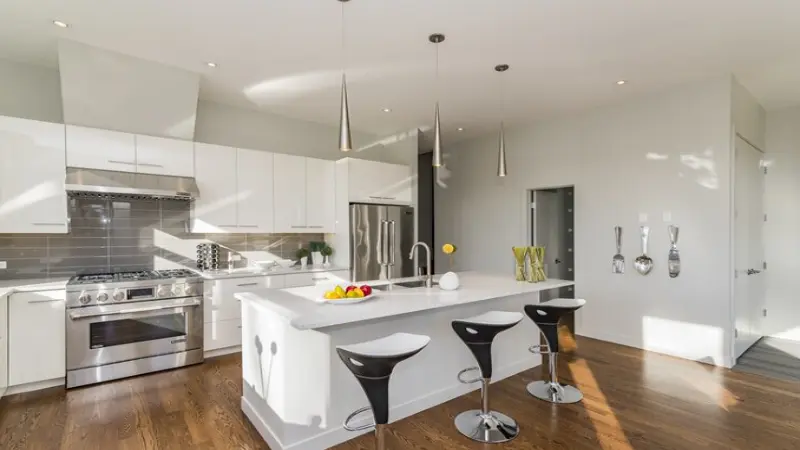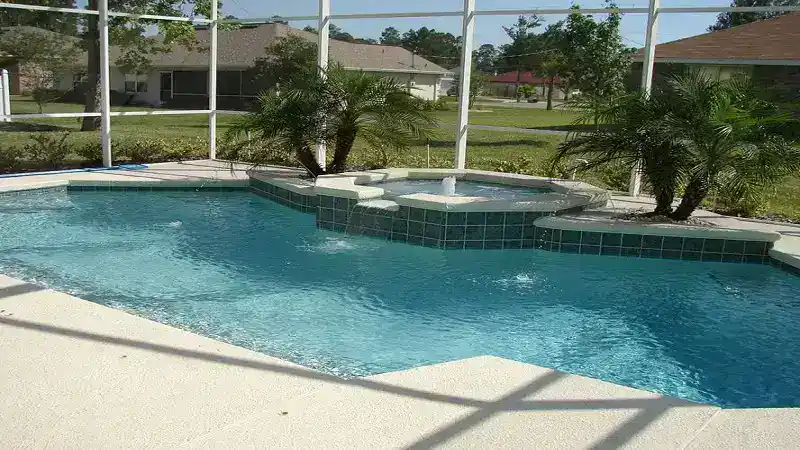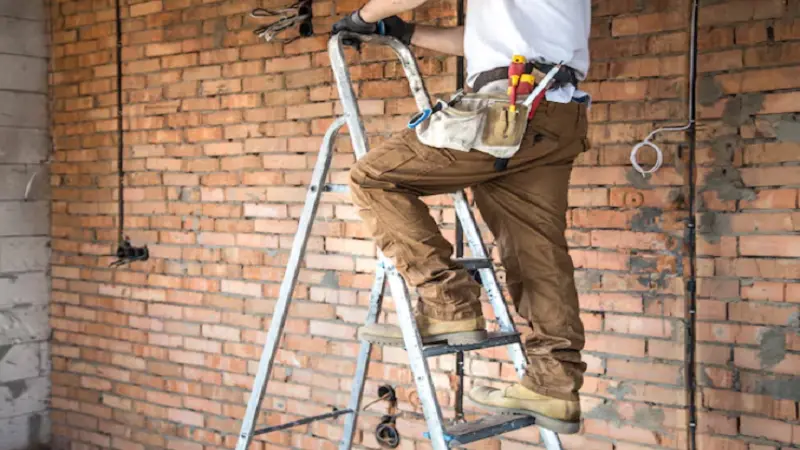Embracing Open Space: The Kitchen Without Upper Cabinets in Interior Architect London.
The modern kitchen is constantly evolving, and one of the latest trends gaining traction is the kitchen without upper cabinets. This design approach focuses on creating a more open, airy, and spacious environment, and it has been embraced by many interior designers and homeowners alike. In this comprehensive guide, we’ll explore the key advantages and disadvantages of kitchens without upper cabinets, provide examples of how to integrate this design into various interior styles, and offer tips on how to execute and utilize this concept effectively. Throughout this text, we’ll highlight insights from an interior architect London, a city known for its cutting-edge design and innovative interiors.
Key Advantages of Kitchens Without Upper Cabinets
Enhanced Visual Space
One of the most significant advantages of a kitchen without upper cabinets is the enhanced sense of visual space. By eliminating upper cabinets, the kitchen feels more open and less cluttered. This is particularly beneficial in smaller kitchens or open-plan living spaces, where the goal is to create a seamless flow between different areas of the home. According to an interior architect in London, this design can make even the most compact kitchens appear larger and more inviting.
Increased Natural Light
Without upper cabinets blocking windows or creating shadows, natural light can flow more freely throughout the kitchen. This can make the space feel brighter and more welcoming. In urban settings, where natural light is often at a premium, maximizing light can significantly enhance the overall ambiance of the kitchen. An interior architect in London emphasizes the importance of light in creating a pleasant and functional kitchen environment.
Simplified Cleaning and Maintenance
Upper cabinets can be difficult to reach and clean, often accumulating dust and grime over time. A kitchen without upper cabinets eliminates this issue, making cleaning and maintenance much more straightforward. This simplicity appeals to busy homeowners who prefer low-maintenance design solutions. As noted by an interior architect in London, reducing hard-to-reach areas can save time and effort in the long run.
Opportunity for Creative Backsplashes
With the absence of upper cabinets, the kitchen backsplash can become a focal point. Homeowners have the freedom to experiment with bold colors, intricate patterns, or unique materials, transforming the backsplash into a statement piece. This creativity can enhance the overall aesthetic of the kitchen, as observed by an interior architect London, who often encourages clients to use this space to express their style.
Cost Savings
Upper cabinets can be expensive to install and customize. By opting out of this traditional element, homeowners can save on construction and material costs. These savings can be redirected towards other areas of the kitchen, such as high-quality countertops, innovative appliances, or stylish lighting fixtures. An interior architect in London highlights this cost-effective approach as a practical advantage for budget-conscious renovations.
Key Disadvantages of Kitchens Without Upper Cabinets
Reduced Storage Space
The most obvious drawback of eliminating upper cabinets is the reduction in storage space. Homeowners need to carefully plan alternative storage solutions to ensure the kitchen remains functional and organized. This might include installing additional lower cabinets, utilizing open shelving, or incorporating a pantry. An interior architect in London suggests that thorough planning is essential to avoid clutter and maintain efficiency.
Limited Concealment Options
Upper cabinets provide a convenient way to hide less attractive kitchen items, such as small appliances, cookware, and pantry staples. Without these cabinets, homeowners must find alternative ways to keep these items out of sight, which can be challenging in a minimalist design. Open shelving or creative storage solutions can help, but may not completely replace the functionality of traditional upper cabinets.
Potential for Increased Dust
Open shelving, often used as an alternative to upper cabinets, can attract dust and require more frequent cleaning. This can be a drawback for homeowners who prefer a low-maintenance kitchen. An interior architect in London advises that choosing materials and finishes that are easy to clean can mitigate this issue.
Examples in the Interior: How to Integrate Kitchens Without Upper Cabinets
Scandinavian Style
A kitchen without upper cabinets fits seamlessly into the Scandinavian design aesthetic, which emphasizes simplicity, functionality, and natural light. Use light-colored wood, white or pastel finishes, and minimalist decor to create a clean, airy space. Open shelving can display neatly arranged dishes and cookware, adding to the overall aesthetic without cluttering the space.
Industrial Style
For an industrial look, opt for metal shelving, exposed brick walls, and concrete countertops. This style embraces raw materials and a utilitarian approach, making it a perfect match for kitchens without upper cabinets. An interior architect in London suggests incorporating vintage or repurposed elements to enhance the industrial vibe.
Modern Minimalism
Modern minimalist kitchens benefit greatly from the absence of upper cabinets, as it aligns with the philosophy of simplicity and clean lines. Use sleek, handleless lower cabinets and integrated appliances to maintain a streamlined look. A monochromatic color scheme with occasional pops of color can create a sophisticated, uncluttered space.
Farmhouse Style
Incorporate open shelving made from reclaimed wood to achieve a cozy, rustic farmhouse kitchen. Displaying charming vintage dishware and glass jars filled with pantry staples can add to the warm, inviting atmosphere. An interior architect in London recommends balancing the rustic elements with modern amenities to keep the space functional and up-to-date.
How to Execute and Utilize a Kitchen Without Upper Cabinets
Planning and Design
Careful planning is crucial when designing a kitchen without upper cabinets. Consider the overall layout, ensuring that essential items are within easy reach and that there is sufficient counter space for food preparation. Collaborate with an interior architect in London to develop a comprehensive design plan that addresses both aesthetic and functional requirements.
Alternative Storage Solutions
To compensate for the lack of upper cabinets, explore alternative storage options such as:
- Open Shelving: Ideal for displaying frequently used items and adding visual interest.
- Drawer Organizers: Keep utensils, spices, and small appliances neatly arranged.
- Pantries: A separate pantry can provide ample storage for bulk items and infrequently used kitchenware.
- Multi-functional Furniture: Consider kitchen islands or carts with built-in storage to maximize space.
Material Selection
Choose materials that enhance the overall look of the kitchen and are easy to maintain. Durable, easy-to-clean surfaces like quartz or stainless steel can be practical choices. For open shelving, opt for materials that complement the kitchen’s style, such as wood for a farmhouse kitchen or metal for an industrial look.
Lighting
Effective lighting is essential in a kitchen without upper cabinets. Install a combination of ambient, task, and accent lighting to ensure the space is well-lit and functional. Under-cabinet lighting, pendant lights, and recessed lighting can all contribute to a well-balanced lighting scheme. An interior architect in London emphasizes the importance of lighting in enhancing both the functionality and ambiance of the kitchen.
Personalization
Without upper cabinets, there is more opportunity to personalize the kitchen with decorative elements. Consider adding artwork, plants, or unique backsplash designs to infuse the space with personality. Open shelving can be styled with curated collections of dishware, cookbooks, and decorative items, making the kitchen feel more like an extension of the living area.
What is Relevant Now: Current Trends and Innovations
Sustainable Materials
Sustainability is a growing trend in kitchen design. Use eco-friendly materials such as reclaimed wood, bamboo, or recycled glass for countertops and shelving. These materials not only reduce environmental impact but also add unique character to the kitchen. An interior architect in London highlights the increasing demand for sustainable design solutions.
Smart Technology
Incorporate smart technology to enhance the functionality of the kitchen. From touchless faucets to smart appliances, integrating technology can streamline cooking and cleaning tasks. Voice-activated assistants and smart lighting systems can also contribute to a modern, efficient kitchen. An interior architect in London notes that technology integration is becoming a standard in contemporary kitchen design.
Bold Backsplashes
With the absence of upper cabinets, backsplashes are becoming a focal point in kitchen design. Bold patterns, vibrant colors, and unique materials like terrazzo or hand-painted tiles can create a striking visual impact. This trend allows homeowners to express their creativity and make a statement in their kitchen.
Multi-functional Spaces
Kitchens are increasingly being designed as multi-functional spaces that accommodate cooking, dining, and socializing. Consider integrating seating areas, workspaces, or even small lounges into the kitchen design. This approach creates a more versatile and welcoming environment, as suggested by an interior architect in London.
How to Seamlessly Fit into Various Styles
Cohesive Design
To seamlessly fit a kitchen without upper cabinets into your home, ensure that the design complements the overall style of your interior. Consistency in color schemes, materials, and finishes is key to achieving a harmonious look. An interior architect in London recommends using elements from adjacent living spaces to create a cohesive transition.
Focal Points
Without upper cabinets, there is an opportunity to create focal points in the kitchen. This could be a statement backsplash, a unique lighting fixture, or a standout piece of furniture. These focal points can draw the eye and add interest to the space.
Balance and Proportion
Maintain balance and proportion in the kitchen design by carefully distributing visual weight. Open shelving, for example, should be evenly spaced and not overloaded with items. Use a mix of open and closed storage to keep the space looking tidy and balanced.
Integration with Other Areas
In open-plan homes, the kitchen should blend seamlessly with adjacent areas. Use complementary colors, materials, and design elements to create a unified look. An interior architect in London suggests using furniture and decor that can serve multiple functions and enhance the overall flow of the space.
In conclusion, a kitchen without upper cabinets offers numerous advantages, including enhanced visual space, increased natural light, and opportunities for creative design. While there are some challenges, such as reduced storage and the potential for increased dust, careful planning and thoughtful design can mitigate these issues. By considering alternative storage solutions, choosing appropriate materials, and integrating the kitchen with the overall style of the home, homeowners can create a functional and aesthetically pleasing space. Insights from an interior architect in London underscore the importance of balance, proportion, and cohesion in achieving a successful kitchen design.





